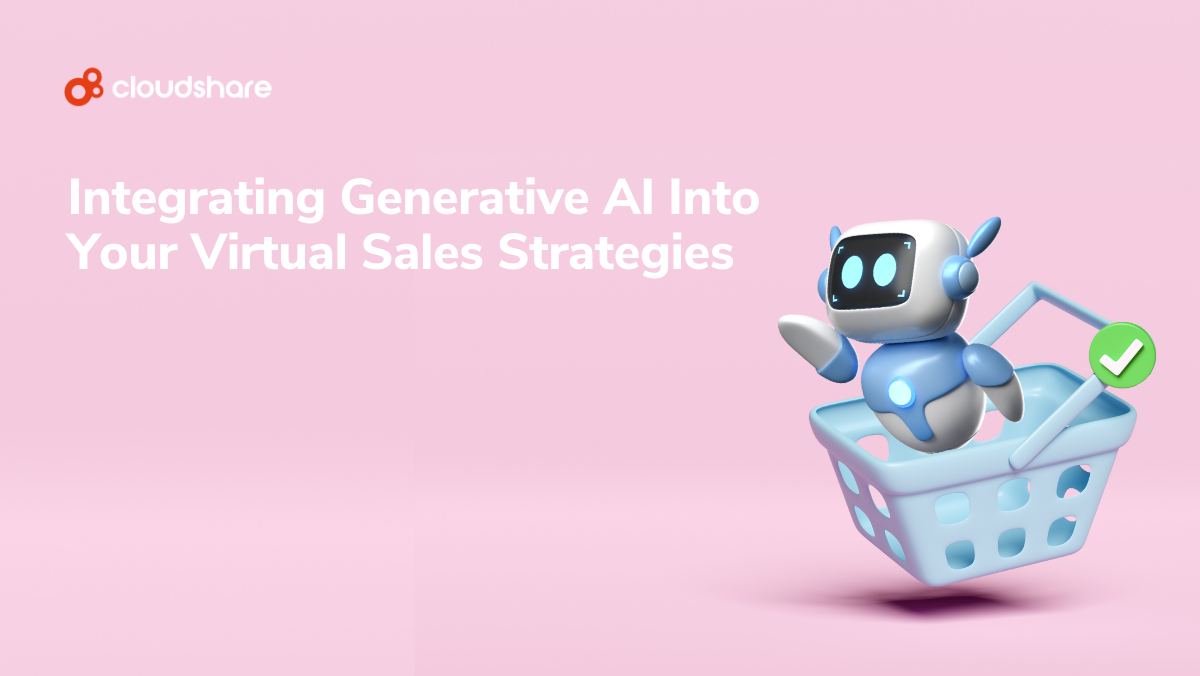
What is a Product Demo? A Helpful Guide for Sales Teams
Show, don’t tell. That’s the golden rule of SaaS sales.
After all, a long-winded explanation is no substitute for firsthand experience. It’s far likelier to put your audience to sleep than close deals. That’s what makes customer demos such a critical part of the SaaS sales cycle.
Unless part of your sales strategy is to help customers and prospects treat insomnia — if so, you can probably stick to PowerPoints.
What’s the Difference Between a Product Demo and a Sales Demo?
The terms product demo and sales demo are often treated as interchangeable. In fairness, that’s because the distinction is sort of confusing. Both demos are delivered by either a sales representative or account executive, and both demos show people how to get the most value from your software.
The difference, according to Hubspot, lies in the target audience
A product demo shows an existing customer what they can do with your software. A sales demo shows a prospective customer what they can do with your software. Except sometimes a product demo is also given to qualified leads or used to upsell a customer on a new service or subscription tier.
Like we said, it’s a bit confusing. Realistically, it doesn’t really matter what you call your demos. Nitpicking terminology won’t make them any less important to your sales cycle.
Why Are Software Product Demos Important?
The best way to understand why product demos are so critical is to look at the impact of a successful demo versus an unsuccessful one. A successful demo allows you to put your best foot forward. It wows your audience by showing them firsthand how your software addresses their pain points.
Occasionally, it even gives customers a sandbox demo environment where they can try everything for themselves.
An unsuccessful demo has the opposite effect. At best, you’ll either bore your audience or leave them unimpressed. At worst, you might end up as a Cybertruck-level meme.
Either way, you’ll both lose customers and close fewer deals.
The Characteristics of an Effective Product Demo
A good product demo is tailored to your audience. It not only shows them how they might use your software, but also which specific problems you’ll help them solve. It tells an engaging and informative story that shows them why they should invest.
A good demo is also treated as part of the customer’s journey. This means the salesperson delivering the demo will draw on data and insights collected from other touchpoints in the sales funnel, and provide data of their own once the demo concludes.
It also means following up with next steps afterwards, such as scheduling a one-on-one call with an account executive or sending more product details.
The best product demos are interactive. The audience doesn’t just see the product in action, but engages with it. Because these demos are also convenient and accessible online, customers can experience them anywhere, even in the comfort of their own home.
Best Practices for Product Demos
Now that we’ve established what defines an excellent demo, let’s talk about a few best practices to help ensure your demos hit home.
Keep It Simple…
Before you schedule a product demo, create a shortlist of the customer’s most relevant features. They’re where you’ll want to focus the bulk of your attention. Not only does this show the customer that you understand their needs and challenges, it also helps ensure your software doesn’t come off as too cumbersome or complex.
…But Not Too Simple.
A demo that’s too watered down or simplistic may make your platform look weak in comparison to competitors. Even if you sidestep that pitfall, limited demos just aren’t compelling. Instead, mirror your audience’s real-world environment as closely as possible, including its challenges.
Focus on The Audience
Too many professionals mistake sales demos for training material. While demonstrations are important in customer training and onboarding, their focus isn’t to teach people how to use your product. It’s to show them why they should use it.
One more thing — tailor your language to your audience, avoiding unnecessary jargon or technical terms while still being as direct as possible about your software.
Plan Ahead
If your demo includes a presentation alongside a hands-on sandbox, you’ll want to write a script and rehearse it until you know it like the back of your hand. Get the timing down to a science so you’re never left awkwardly stumbling over your words.
While doing so, test your demo extensively. Put it through the motions as much as possible before it’s time to go live. If something’s going to break, it’s better for it to do so prior to your sales pitch.
If You Intend to Automate, Do So Conscientiously
A virtual sandbox is a great way to experience a product. However, don’t just turn people loose with no guidance. That basically guarantees your audience won’t have the best experience.
They may overlook a critical feature while exploring less-relevant ones. They might be frustrated by your lack of assistance if they run into a technical problem. Or they may sit on their thumbs, uncertain of what to do or where to go next.
Give each prospect a task list to accompany each demo, built from their shortlist of relevant features. If you’re pitching project management software, for instance, you might have your audience organize virtual users into groups and then assign tasks based on each group’s specialization.
Next Steps: Master the Product Demo Experience with CloudShare
Demos represent the most important part of your sales cycle. Static, one-size-fits-all presentations no longer cut it. You need to offer an interactive product experience tailored to each customer or prospect’s exact use case.
With traditional IT labs, that’s easier said than done. Each demo requires hours or even days of configuration. You’re also limited in how many demos you can run at a given time.
What you need is a platform that empowers your team to leave legacy training solutions behind. Our leading-edge virtual training labs are incredibly easy to set up and use, allowing you to spin up realistic virtual environments in just minutes. Better yet, you can create and host as many demos as your team requires, while embedded analytics show you how and when a customer or prospect engaged with your software.
Your prospects, meanwhile, can see the value of your solution in their own operating environment while you have complete control over invites, usage time, and allocated resources.
CloudShare allows your organization to create demos that resonate with any audience. It gives your customers exactly what they want, and none of what they don’t. No worries about scheduled updates, downtime, or roadblocks in the demonstration.
But what does your audience want? What sort of experience do modern IT buyers demand from SaaS companies? We answer that question in our free guide, How to Drive More Sales by Giving Modern IT Buyers What They Want, which also explains the problems with outdated sales techniques — and the power of cloud-based demos.



